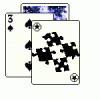Many of us don't want the sort of streamlined experience you're talking about. If I'm deep in the dungeon then being able to find my way out safely is part of gameplay. I might choose the wrong path and walk into an unexplored bit and get ambushed. I might have to make a difficult decision between pressing on or turning back, and maybe between ditching some loot in order to be able to continue. Those choices are part of the game.
Count me in your boat also. Though I agree with the OP that walking out of an entirely empty dungeon is boring, for me the solution isn't to teleport the player out of the dungeon, but to make the dungeon exit lead back to the world in general, or to make the way back interesting.
Perhaps one 'inspiration' as a designer would be to try and make the way out of a dungeon be even more enjoyable than the way in. If your entrance route got caved in, now you have to locate a different exit entirely out of this cave network, resulting in you finally seeing the light of day emerging out onto some incredible mountain-side vista...
Or a mini-boss you beat earlier gathered some friends and is waiting to jump you on your way out...
Some of this may be hard to design, because if the player designs (and if death doesn't mean 'reload your save'), then you get the unexpected player coming back into the dungeon and encounter the 'going out of the dungeon' encounters, but this can be dealt with by more flexible game design (less dependency on scripted events, and more dependency on emergent behavior of entities - which is, IMO, another important focus of gameplay).
One thing I dislike about the 'teleport out of the dungeon', is that some games force that teleportation on you after beating a boss, but as a player, maybe there were side-routes I hadn't finished exploring yet.
But in general, I agree that getting through dangerous environments (both in and back out) is were alot of gameplay pleasure can be found. One of my earliest moments of immense pleasure as a gamer was playing Quest 64 and making it through Cull Hazard Cave (and later, Blue Cave, and the Mine shaft, and Boil Hole). This experience is so enjoyable, I've beaten Quest 64 around ten times (no exaggeration), and as far as I can reflect, every play-through I've had the same pleasurable experience breaking out through dungeon to the world on the other side.
This is partly why I enjoy dungeons as more of a "tunnel" mindset then a "tomb" mindset. Coming through to the world on the other side has always been a pleasure to me, in many games (Mt. Moon in Pokemon Red/Blue, and many JRPGs have these).
One of the coolest things, though it doesn't make too much sense, is having a full village or town at the dungeon's exit. The sudden rush of exhilaration at going from "Am I even going to survive?" to food, items, inns, saver, peaceful energetic music, new and pleasant visuals, multiple more open paths to explore (your choice of) new areas of the world.
This "tunnel-dungeon" is actually something I feel open world games could benefit more from.
I might have to make a difficult decision between pressing on or turning back [...]. Those choices are part of the game.
This ^^^ is a major part of gaming for me.
Toeing my way into Cull Hazard, making past the cliff area, turning back resting again, re-entering and making it to another visual landmark before turning back again, finally pressing all the way in always uneasy about whether I'll actually survive, but finally travelling so deep into it that there's no use turning back now... then it becomes a gamble of, do I waste my items or not, so I can travel another ten minutes before death?
Taking the risk, using an item or two, pressing on, health and mana whittled down to almost nothing, deeper than I've ever been, no exit in sight, no chance of making it now, any minute I'll die... now it's just a matter of pressing on to map out the dungeon in my mind for my next attempt, because any step here I'm going to get beaten, but... Wait - what's that light? That's not... no? Yes? It's sunlight pouring through an exit... is it really the exit? Or just leading to another part of the dungeon? It must be the exit... Oh crap, another enemy, I hope it's not a... dang it, another freakin' dragon. Run run run run, dodge his fireballs. The light, almost there... almost there... yes! I'm finally through! What's that noise? I'm in a village, and there's the inn right in front of me!
The village's background music is practically singing to me. No; it's practically singing for me. I've survived.
The exhilaration of survival is major to me. The pleasure of exploration is fantastic. Games that combine the two together are immensely important to me.
What's really cool is that when games do survival well, it actually reinforces the exploration (at least to me). I can re-enjoy the pleasure of exploring areas I've already explored on previous play-throughs, and re-appreciate the world, if there's that element of risk in my choices, that thrill of danger in my actions and the pleasure of surviving, of making it to the next safe place.
One random thought is: having bosses at the end of dungeons doesn't make much sense in this mindset, because dying between beating a boss and saving is miserable and feels punitive. Instead, I'd like bosses guarding the entrances of dungeons (or perhaps only partway into them), and guarding treasures in side-branches of dungeons (where players can bypass them by choice until their next excursion into the dungeon). I'd have to give it some thought, but I think this might be a more enjoyable (for my play-style) way of designing dungeons, regardless of whether it's a tomb-type or tunnel-type dungeon.
Counter-intuitively, while I'm in favor of condensing game worlds to reducing unnecessary time in getting from A to B, I'm also in favor of making dungeons long enough (but still content-dense) to give players a feeling of hopeless and dread that they aren't going to make it through it alive until, suddenly, they do - with the sun shining and the birds chirping. I don't want dungeons stretched out and watered down, but I want them to be challenges of long-term survival as enemies gradually wear me down.
I also don't want dungeons to have cheap insta-death tricks (like balancing on narrow poles over vats of lava - unless that's a core mechanic of the game), and don't want dungeons to be maze-like to intentionally confuse and disorient. It's not fun (for me) to explore mazes that are designed to make each hallway look the same. But having long dungeons of unique visuals, with skippable side-branches guarded by guard-dogs that I can return to later, I think would probably be my preference.












